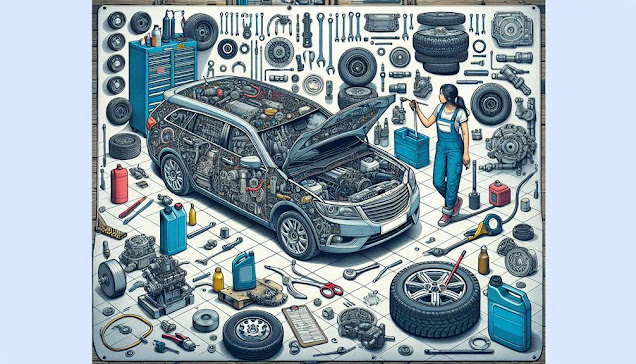How to Detect Brake Issues and Know When to Get Brake Repair
Your car’s braking system is one of the most crucial safety components, ensuring you can stop smoothly and avoid accidents. Whether you drive a Toyota, Honda, Lexus, or another Asian vehicle, recognizing early signs of brake issues can help prevent costly repairs and keep you safe on the road. Understanding common brake problems and knowing when to seek professional brake repair is essential for maintaining your vehicle’s performance. According to the National Highway Traffic Safety Administration (NHTSA), brake-related issues contribute to nearly 25% of vehicle crashes caused by mechanical failures. Regular inspections and timely repairs can significantly reduce risks and improve overall driving safety. In this guide, we’ll discuss key warning signs and when to schedule a brake inspection.
Early Signs of Brake Problems
Identifying brake issues before they worsen can save you time, money, and potential hazards. Here are some early warning signs to watch for:
Squeaking or Grinding Noises
Unusual noises when braking often indicate worn brake pads. Squeaking sounds suggest the pads are thinning, while grinding noises may mean the pads are completely worn out, causing metal-to-metal contact that can damage the rotors.Soft or Spongy Brake Pedal
If your brake pedal feels soft or sinks to the floor, there may be air in the brake lines or a brake fluid leak. To check your brake fluid levels at home, locate the brake fluid reservoir under the hood, typically near the back of the engine bay. Ensure the fluid level is between the minimum and maximum marks. If it’s low, topping it off with the recommended brake fluid can help, but if the issue persists, seek professional inspection. This reduces braking efficiency and should be addressed immediately to prevent brake failure.Vibrations or Pulsating Brake Pedal
A vibrating brake pedal, especially when braking at high speeds, is a sign of warped rotors. This issue is more common in vehicles frequently driven in stop-and-go traffic or mountainous areas.Car Pulling to One Side
If your vehicle pulls to one side when braking, it could be due to uneven brake pad wear, a stuck caliper, or brake fluid contamination. Addressing this issue promptly ensures even braking and prevents further damage.Dashboard Brake Warning Light
Most modern Asian vehicles are equipped with brake warning lights that indicate low brake fluid, worn pads, or other system issues. Common dashboard symbols include a red or yellow exclamation mark inside a circle, an ABS warning light, or a brake fluid indicator resembling a dripping reservoir. If any of these lights turn on, it’s essential to check your braking system promptly. If the light stays on, schedule a brake inspection immediately.
When to Seek Brake Repair
If you notice any of the above warning signs, seeking professional brake repair is crucial. Here are situations where immediate attention is necessary:
- Severe Grinding or Screeching: Ignoring this can lead to expensive rotor or caliper damage.
- Brake Fluid Leaks: If you notice a puddle of fluid under your car, it could indicate a brake line leak.
- Complete Brake Failure: If your brakes feel unresponsive or take longer to stop, stop driving and seek emergency repair.
Maintaining Your Brakes for Longevity
To avoid unexpected brake problems, follow these maintenance tips:
- Check brake hoses and lines for leaks: Regular inspections help detect potential fluid leaks that could lead to brake failure.
- Replace brake pads regularly: Check them every 30,000 to 70,000 miles, depending on your driving habits.
- Flush brake fluid every 2-3 years: Over time, brake fluid absorbs moisture, reducing its effectiveness.
- Have your rotors inspected: Warped or damaged rotors can lead to inefficient braking.
- Drive cautiously: Avoid hard braking when unnecessary to extend the lifespan of your brakes.
Recognizing early brake problems and seeking timely brake repair can prevent accidents and costly repairs. To ensure your vehicle remains safe and reliable, schedule regular brake inspections with a trusted mechanic and address any issues before they escalate. If you notice unusual noises, vibrations, or a warning light, don’t delay—schedule a brake inspection with a trusted mechanic. Keeping your braking system in top condition ensures a safe and smooth driving experience, especially for owners of Asian vehicles who value reliability and efficiency.



Comments
Post a Comment